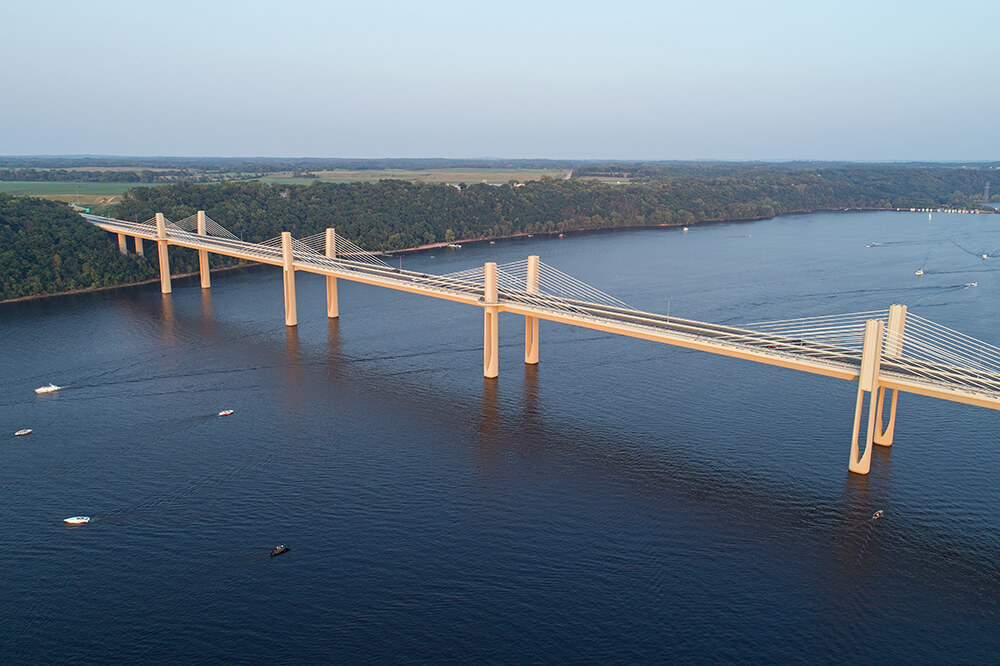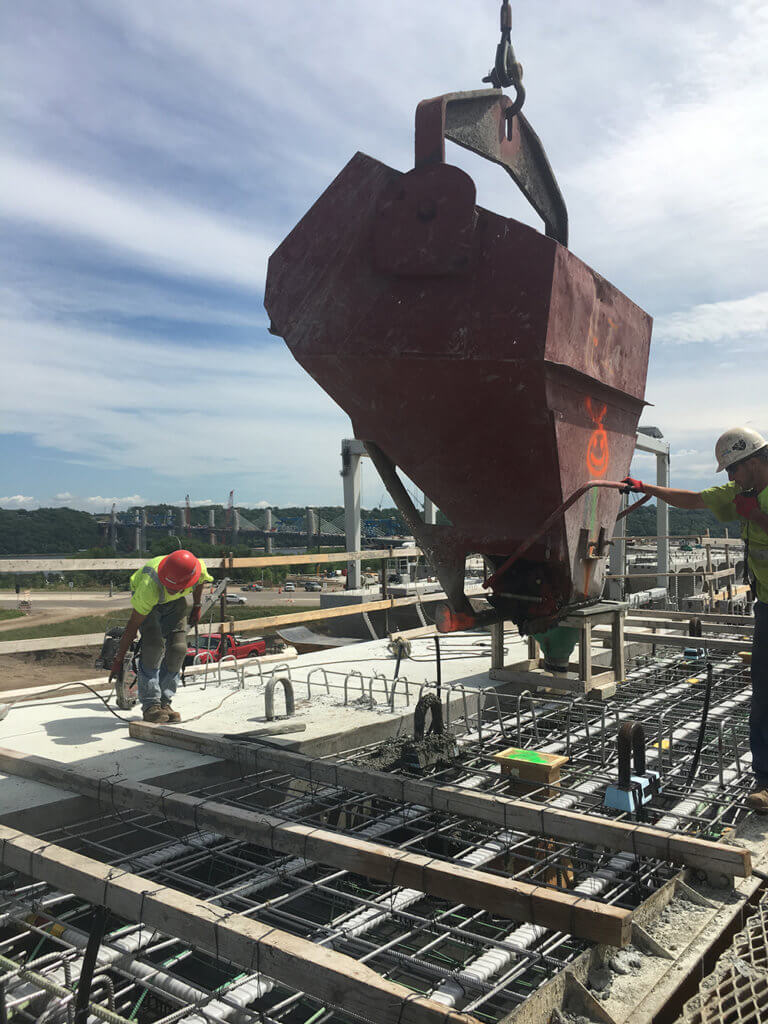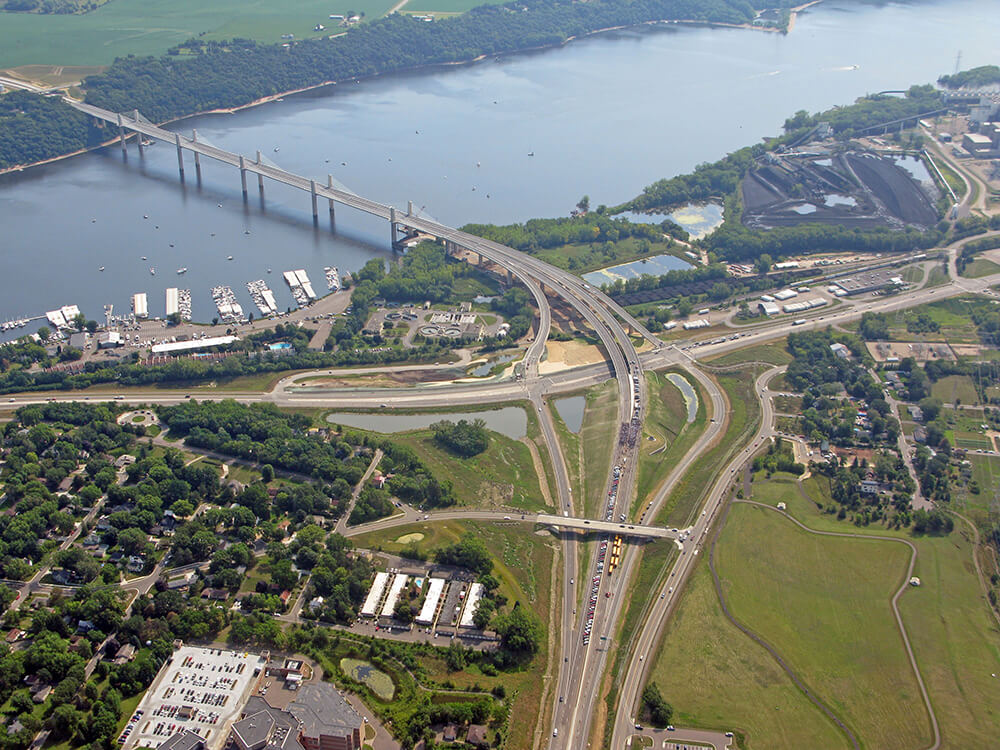Project Highlights
St. Croix Crossing
The St. Croix River crossing in Stillwater, Minnesota is a highway bridge connecting downtown Stillwater to the Town of St. Joseph in St. Croix County, Wisconsin. The crossing consists of a 1,050 foot-long, 10-span, 2-lane bridge and a 750-foot earthen causeway extending from the Wisconsin shoreline. It is known as “The Lift Bridge,” because one of the spans is a distinctive vertical lift span. The bridge, which opened in 1931, was listed on the National Register of Historic Places in 1989. Frequent raising of the bridge to allow boats to travel the St. Croix River causes traffic congestion in Stillwater and Houlton, Wisconsin, as traffic backs up to wait for the bridge to lower and resume vehicular traffic.
The Lift Bridge links Minnesota Trunk Highway (TH) 36 to Wisconsin State Trunk Highway (STH) 64. TH 36 is a four-lane divided highway through Oak Park Heights, Minnesota, that merges with TH95 near the St. Croix River, a National Wild and Scenic River. TH 36/TH 95 is a two-lane highway connecting Oak Park Heights to downtown Stillwater, where TH 36 continues east to the Lift Bridge. STH 64 is a three-lane rural highway up the Wisconsin bluff into Houlton in the Town of St. Joseph. STH 64 merges with STH 35 in Houlton and continues as a two-lane rural highway northeast through St. Joseph, expanding to a four-lane highway at 150th Avenue.
PE Services staff were involved in numerous aspects for this project. Details surrounding project controls, documentation, project photos, grading and base materials testing, and environmental compliance are some of the services we partnered with MnDOT/WisDOT and FHWA to accomplish. This project, almost 40 years in the making was instrumental in its accomplishments and community involvement, resulting in an asset of infrastructure that will last for generations to come. The St. Croix Crossing has been decades in the making, partly because of the many historic, cultural, and environmental features along the St. Croix National Scenic Riverway. There has been extensive community involvement on both sides of the river to determine whether a bridge should be built and to select the best location/alignment for the bridge. This 690-million-dollar project involved 18 separate environmental permits, including the typical 404 and 401 water quality permits. This project had dynamic interactions with multiple local watersheds, state, and federal agencies, along with requirements to monitor and audit over 650 construction workers daily.



